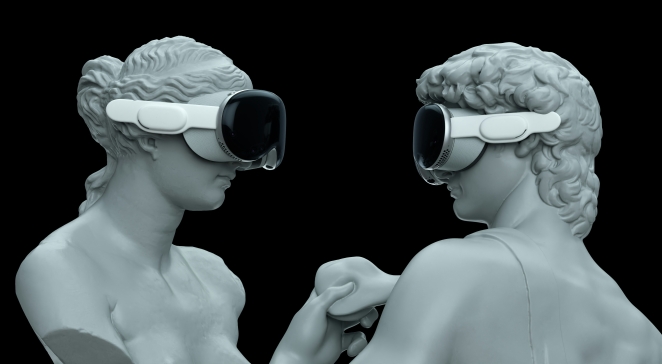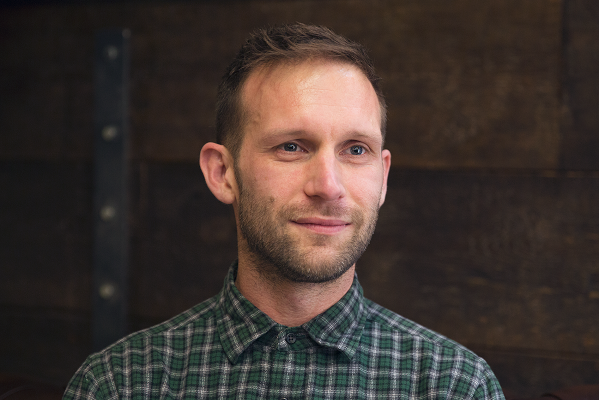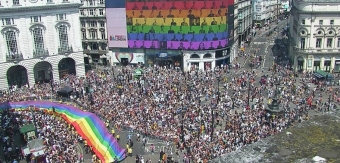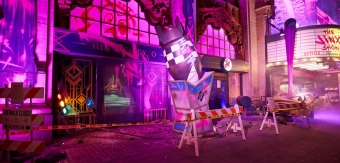AI has already established itself as a pretty formidable force in the advertising space but has adland already reached a little too close to the sun. AI, at its core, promises efficiency, precision, and the ability to analyse consumer behaviour like never before. But it’s also still a fledgling technology incapable of original thought and that means, inevitably, we were always going to reach a plateau. Many might argue we’re already there.
You only have to spend a few minutes online these days before coming across a piece of content obviously generated by AI. The telltale sign? The general air of “meh” that seems to hang over so much of it. This is content that’s passable but unremarkable; safe but sanguine and rarely inspiring. There’s the feeling among many creatives, particularly those in advertising, that AI is already homogenizing creativity. Is there a way back?
The Allure of AI in Advertising
AI can analyse vast amounts of data to predict consumer preferences, optimise ad placements, and personalise content in a matter of seconds. So of course, advertisers have leapt onto the bandwagon. AI can also automate repetitive tasks, which means that, AI-driven campaigns often have a lot of immediate “grind” behind them and can genuinely achieve impressive metrics in terms of reach, engagement, and conversions.
This reliance on data and algorithms, however, can lead to a preference for what has already worked in the past, resulting in safe, formulaic content that eventually starts to feel incredibly familiar and long in the tooth. Several brands have already fallen into this trap of "midness". PepsiCo, for example, started experimenting with AI in advertising back in 2020 with their “Ada” AI, named after famed computer programmer Ada Lovelace.
Four years on and Ada has informed countless campaigns from Walkers to Pepsi, using marketing insights to inform creative. The results? Nothing even remotely exciting. The insights of Ada, for example, led directly to the “CrispIn CrispOut” campaign for Walkers above.
The ad was based on Ada’s insight that “Walkers no longer registered within the culture of British people”. Sounds find on paper, but the result is a generic ad about crisp sandwiches which tries too hard to be quirky. Beyond a shadow of a doubt, it's incredibly “mid” and seem to be missing much of that definable human touch.
The Human Touch
The core issue with AI-driven creativity is that algorithms lack the human touch – the ability to understand cultural nuances, emotional depth, and the subtle art of storytelling. Creativity thrives on unpredictability, serendipity, and personal expression – elements that are difficult to encode into an algorithm.
Apple’s “Shot on iPhone” campaign is a recent example of human creativity at its best. The ever-expanding campaign showcased stunning photographs taken by real users, celebrating the artistry of everyday moments.
It resonated on a personal level, creating a sense of community and shared experience. The authenticity and emotional appeal of this campaign are elements that AI struggles to replicate. It’s one of many reasons why Apple is consistently named creative brand of the years at Cannes.
See also the Cannes Lions darling winner from last year “The Last Photo” by Calm. This is a painfully emotional and absorbing piece of creative based around the power of grief and coming together to combat the very idea of suicide. To assume an algorithm could create something with such a dense message in such an artistic and thoughtful way is frankly ludicrous. That being said, however, AI isn’t going anywhere, so what’s the solution?
The Future of AI in Creativity
While AI has its limitations, it should be seen as a tool to augment human creativity, not replace it. The key is to find a balance where AI handles the data-driven aspects of advertising, freeing up human creatives to take risks and push boundaries. Brands could adopt a hybrid approach, where AI is used for its strengths in data analysis and personalization, while human creatives focus on storytelling and emotional connection.
Developing AI tools specifically designed to enhance creativity rather than stifle it is another potential direction. Tools that assist in brainstorming, provide diverse perspectives, or simulate creative scenarios can inspire human creatives and help them break out of conventional patterns.

Whatever the solution, ensuring that AI is used ethically, without reinforcing biases or creating homogeneous content, is crucial. Brands must prioritise diversity and inclusivity in their AI-driven campaigns to avoid the pitfalls of mediocrity and ensure that their content is as varied and vibrant as their audience.
It is, in every way possible, a double-edged sword. Because while AI offers unparalleled efficiency and precision, it also runs the risk of creating a landscape of unbearable mediocrity. The key to avoiding this trap lies in balancing the strengths of AI with the irreplaceable human touch of creativity.
In many ways, the future of advertising will depend on how well we can integrate AI’s capabilities with human ingenuity to create content that is not just effective, but also inspiring, memorable and emotional.
More Creative Opinions
Matt Garbutt, Creative Director, Brave Bison

To answer the question of whether AI has ed to a landscape of "midness”, it helps to know where we are in this hype cycle. Right now, I believe we’re moving towards the latter stage of early adoption: we know that AI is game-changing, and we’re just beginning to figure out how to use it.
Creative proto-moments have often been gimmicky. Take Beck’s for example, who handed over an entire campaign to AI. From product development to campaign creative through media planning, AI was at the helm. While it created PR buzz, I have no idea how it performed.
By now, we’re all clear that AI isn’t here to replace human creativity. It’s trained on us for use by us. The leaps of imagination are still our domain. It’s a tool to find fertile ground. Once identified, it’s up to us to plant and nurture our garden.
Sure, we can be lazy, giving too much over to the tech. The result will be ‘Midness’.
But when used effectively, AI can lead somewhere else, an exciting place that I’ll call ‘Youness’.
Some of the most compelling AI-enabled campaigns of the last year or more have involved community co-creation. Coca-Cola’s ‘Create Real Magic’ (above) invited fans to use Dall-E for creating fan art, engaging a broad audience in a unique way. Similarly, our campaign with WWF for World Wildlife Day enlisted a 5000-strong AI creative community to visualise a world without nature, showcasing a powerful blend of technology and individual imagination.
Other campaigns show us AI's potential for personalisation. Nike’s 'By You’ campaign lets customers design their shoes, offering a unique shopping experience. The Calm app uses AI to recommend personalised content based on user data, enhancing engagement and satisfaction. Virgin Voyages’ 'Jen A’ campaign created individualised cruise invitations featuring Jennifer Lopez, merging AI personalisation with celebrity appeal.
This journey towards 'Youness' is exciting. AI’s ability to personalise experiences by understanding large datasets and learning about us as individuals is a massive shift. That long-held promise of individualised, and therefore more valuable, content is becoming a reality.
Of course, we’re also worried. The potential for pitfalls and misadventure is real. We have persistent and well-founded concerns about tech knowing too much about us.
But now that the tech is upon us, there’s no going back. The future of advertising is co-creation, personalisation, and individuality.
If we care about the people we create for, we deliver Youness.
Patricia Lefebure, a Executive Creative Director in London working at eight&four
AI didn’t create the midness, it’s just confirmed it.

Working in social, I see the marketing and advertising landscape constantly changing. We chase popular trends, master new platforms, and constantly tweak content to feed into the algorithms. Amongst this endless catching up, it’s easy to forget that ultimately what we do is connect with people; we create work that resonates.
Our audiences have decreasing attention spans, we need to design for videos that are muted one day and disrupting your bus journey the next, all while A/B testing to land on the most effective content. But where does this relentless mission for catch-all-creative leave us? Content that feels a bit, well, a bit meh.
Day in, day out we are churning out content designed to grab attention for a fleeting moment, before being scrolled past and forgotten. And the culprit behind this sea of forgettable content is our own obsession with chasing metrics via best-practice creative. We've been so fixated on outsmarting the system that storytelling, the foundation of human connection, has fallen by the wayside. We've sacrificed the flame of creativity for the efficiency of mass production.
Don't get me wrong, data and analytics are valuable assets. But they should be there to guide, not dictate, our creative decisions. The most impactful creative work still comes from a place of human understanding and empathy. It's the kind of creative that makes people feel something and, ultimately, remember what they’ve just seen.
So, how do we break free from this cycle of uninspired ‘midness’?
Blaming AI is an easy trap to fall into. AI-generated content can fall flat because it thrives on predictability. This predictability feels safe, even comforting, but it rarely excites and leads to a true connection with the audience.
It's tempting to view AI as the main driver of this creative stagnation, but the truth is that AI is simply holding a mirror to our current creative approach. If we feed it formulaic content, it will inevitably regurgitate what it’s been fed.
However, the story around AI doesn't have to be one of creative doom.
The exciting thing is that AI has the potential to democratise creativity, making it more accessible and more affordable. AI-powered tools, such as music composers and digital art platforms, make it possible for anyone to create, regardless of their technical skills. This democratisation will lead to a more diverse and inclusive creative landscape, where a wider range of voices and stories can be heard.
Content creation has become increasingly expensive. Each piece requires variations for numerous platforms, and budgets are often spent on platform optimisations rather than core creative concepts. But, GenAI offers a solution here.
By automating content variations and streamlining optimisation processes, we can free up resources for what really matters: crafting meaningful content that resonates with people.
And so far this automation has blown us away. Coach, our own AI-powered image generator, has allowed us to create “unshootable” visuals, significantly enhancing the appeal of our content for both clients and audiences.
Which essentially means that GenAI’s ability to create images and videos based on prompts is set to eliminate the need for expensive and time-intensive photoshoots and video productions, opening the door for us to channel our creativity, time and budgets into new frontiers of creative exploration.
A real-life example of this is for the upcoming Genesis Scottish Open. Due to the stringent maintenance regulations and logistical constraints associated with filming anything directly on a golf course, traditional photoshoots wouldn’t be feasible. However, Coach enabled us to create images that beautifully combine the worlds of The Scottish Open and Genesis, offering a creative solution that wouldn’t have been possible otherwise.
I could talk about this forever, but in short, we’ve never seen a more exciting opportunity for our industry to create surprising and exciting content and it’s about to increase exponentially.
This is going to be a game-changer, we just need to embrace it.




